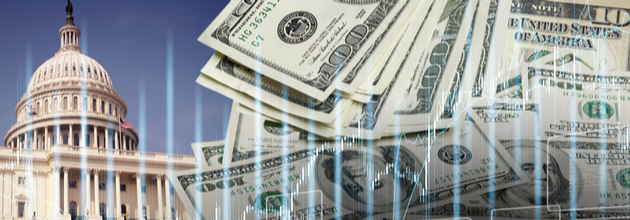
 | Read in Browser | |||||||||
 | ||||||||||
 | ||||||||||
| ||||||||||
Movement: The news sent the iShares China Large-Cap ETF (NYSEARCA:FXI) up 2.6% premarket. Chinese markets are closed for most of the week due to holidays.
The latest meeting was brokered by Jake Sullivan, U.S. national security advisor, and Yang Jiechi, China's top foreign policy official. The two met in Zurich this week for talks that were described as "productive" compared to the gathering that took place in Anchorage back in March. Sullivan raised further concerns about a range of issues that have affected U.S. investment, including the crackdown on the pro-democracy movement in Hong Kong, the treatment of Uyghurs in Xinjiang and Chinese military activity around Taiwan.
Outlook: Trade will also be at the top of the agenda with China following comments made by U.S. Trade Representative Katherine Tai earlier this week. She vowed to enforce Phase 1 of a trade deal in which Beijing pledged to buy at least $200B more U.S. goods and services over 2020 and 2021, compared to 2017. However, China had only reached 62% of that target as of August, based on export data compiled by the Peterson Institute for International Economics. Tai additionally said there were "serious concerns" about the country's "state-centered and non-market trade practices," which were not addressed under the current framework. (2 comments)
In Europe, at midday, London +0.7%. Paris +1.2%. Frankfurt +1.1%.
Futures at 6:20, Dow +0.4%. S&P +0.6%. Nasdaq +0.9%. Crude -2.3% at $75.68. Gold -0.1% at $1760.10. Bitcoin +6.8% at $54035.
Ten-year Treasury Yield flat at 1.53%
New denim styles drive Levi Strauss (NYSE:LEVI) earnings beat and raised outlook.
Nvidia (NASDAQ:NVDA) proposes concessions to EU for $54B Arm (ARMHF) deal.
Palantir (NYSE:PLTR) gets pushback from bearish analysts over Army contract.
Cannabis in spotlight: What to expect from Tilray's (NASDAQ:TLRY) FQ1 earnings?
Sweden, Denmark halt Moderna's (NASDAQ:MRNA) COVID shot for younger people.
Electronic Arts (NASDAQ:EA) is the biggest S&P loser on Battlefield bug reports.
Apple (NASDAQ:AAPL) to face EU antitrust charge over NFC chip - Reuters.
Affirm (NASDAQ:AFRM) skyrockets as Target (NYSE:TGT) promotes partnership.
Twitter (NYSE:TWTR) to sell mobile ad firm MoPub to AppLovin for $1B.
NASA moves two astronauts off Boeing (NYSE:BA) Starliner project to SpaceX (SPACE).


Want More Ideas?
Our best ideas → Stock Ideas
ETF's Investing Ideas → ETF Ideas
Dividend stocks ideas → Dividend Ideas
This email was sent to you because you signed up to receive Wall Street Breakfast.
If you do not want to receive Wall Street Breakfast emails, click here to unsubscribe.
Sent by Seeking Alpha, 52 Vanderbilt Avenue, 13th floor, New York, NY 10017






EmoticonEmoticon